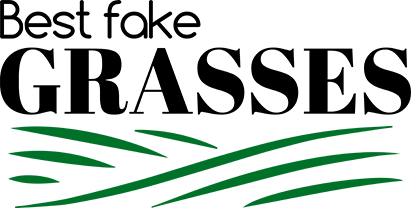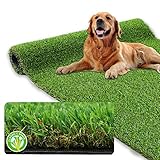Have you ever looked at your neighbor’s patio and wondered how they keep it so alive? Even when there is a drought going on, the neighbor from down the street seems to have a secret source of water because his patio is ever so green. What the neighbor from down the street might not be telling you is that he has fake grass on his patio.
That’s right; there are very many homeowners just like this neighbor who have realized that having fake grass on their patios is a much better bargain than having actual natural grass. You might be wondering why anyone would want to do that – after all, gardening and lawn maintenance is one of the most common pass-time weekend activities across the country.
The truth is that most people buy fake grass because it has a long list of advantages when compared to real grass.
Reasons Why You Should Have Fake Grass on Your Patio
Artificial grass technology has greatly improved lately. This makes spotting the difference between real and fake grass even more difficult. What hasn’t changed, however, are the advantages that come with having fake grass installed on your patio.

Here are some reasons why you might want to consider being like Jim from down the street:
Fake grass is always green: This is the biggest issue that most people have with the lawns or patio grass – it tends to dry off and turn brown, especially during droughts. This is not a problem that you will experience with faux grass.
Synthetic turf is always green mostly because it doesn’t depend on the weather, watering, or on the quality of your soil. It only depends on the quality of the turf as well as the color you choose (fake grass comes in many different colors including brown – for some reason).
Fake grass doesn’t need much care or maintenance: For Jim to have an evergreen lawn or patio grass, he would have to hire a professional landscaper and gardener who will spend hours each week tending to the grass on his lawn.
Not only will this cost money, but it will take up a lot of water, fertilizer, and pesticides. This is not the case with faux grass. This kind of grass doesn’t need much care nor maintenance. All he has to do is wash it and sweep it from time to time to keep debris off and maybe clean the spots where the dog “marked his territory.”
Fake grass is almost always soft: Depending on the quality of the faux grass you buy, you will always have a soft patch on which to walk or sit. Unlike real grass, faux grass doesn’t dry up and become brittle when not watered sufficiently.
Apart from the fact that the initial investment that comes with installing fake grass on your patio might be high, you really won’t have to spend much more on your patio. You don’t have to water it, spray pesticides on it, nor use expensive fertilizer to keep it green. You just have to wash and brush it from time to time and enjoy a green patio.








Is It Fake Grass?
If you have been wondering how come only the grass on your patio seems to go through a tough time year in and year out, maybe it’s because all your neighbors have fake grass on their patios. Here are a few tips on how you can find even the best fake grass on patios:
It Seems Out of Place
If the rest of the patio seems to be experiencing the same kind of drought that the rest of the state is, but the grass is still very green, then it’s fake grass. Yes, there is a good chance that your neighbors might just be really watering their lawns, but who really has that much water to spare in the middle of a draught? If the patio stays green all year round and provides a gorgeous splash of green amidst a brown and dusty background, it’s faux grass!
The Green on the “Grass” is a Little Deeper than Usual
As already mentioned, faux grass comes in many different colors. Even when the artificial turf is green in color, it almost always seems to be just a shade richer or deeper than your typical grass. Another thing to note is that fake grass will most likely be a uniform type of green. It’s difficult to find a lawn full of grass that is a uniform color, no matter how well-manicured.
Natural grass always has strands that aren’t so green and others that are just plain brown. While it’s true that there are synthetic turfs that now have sprinklings of brown to give them a more natural look, the occurrence of these brown strands isn’t quite as random as it would be on real grass.
Is it Occurring in Unnatural Places?
This is the easiest way to tell if the grass on your neighbor’s patio is real or fake – check if it occurs in unnatural places. For example, would you plant grass around your swimming pool or on your walls?

While it’s possible to plant grass around your swimming pool, real grass tends to soak up water, become slippery, and make that entire area muddy. So, if the sides of their pool are lush green yet not muddy nor slippery, it’s fake grass.
You definitely can’t plant grass in places like walls or indoor balconies. Basically, places where soil doesn’t naturally occur can’t have grass unless it’s faux grass. And if there is one strip of fake grass on the property, there is a good chance that there is more.
You Can Easily Spot the Individual Blades
Fake grass often comes in different qualities, including thickness and height. The most expensive of them are usually packed together and gives you a nice thick volume of faux grass per square foot. The cheaper options are more spread apart and tend to be thinner and less banded together.
Either way, when you take a good close look at fake grass, you will often see the individual blades from the ground up since they are supported and kept upright by infill. This is never the case with real grass. Real grass doesn’t stand conveniently upright, and it doesn’t need support.
Truth be told, faux grass is slowly but surely taking over America’s lawns and patios. It’s easier to install, cheaper to care for and always looks good.






